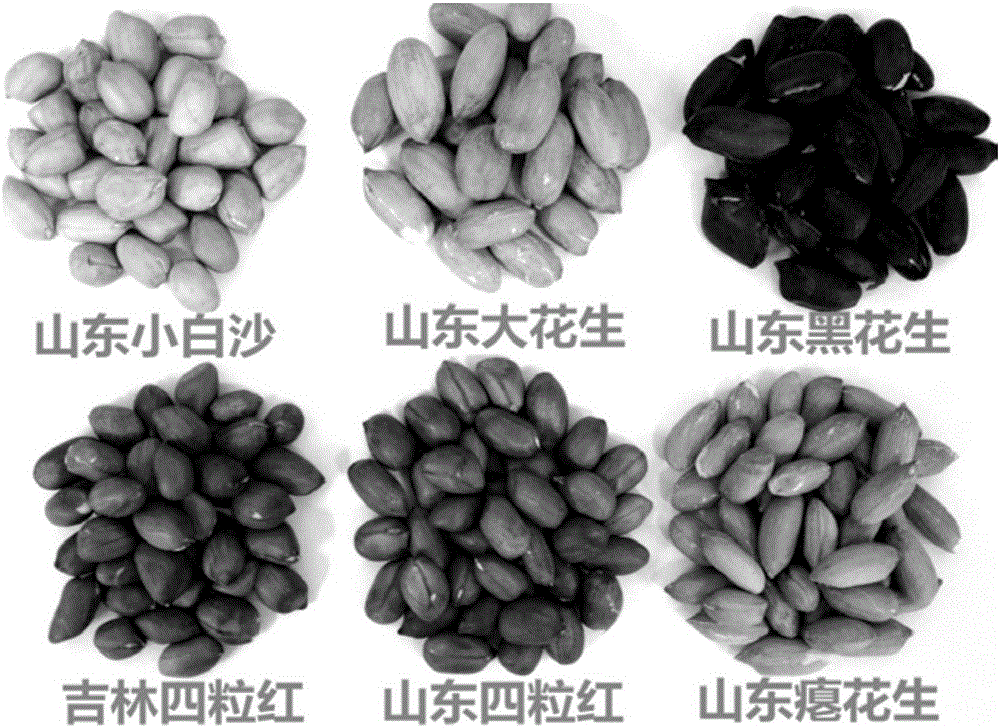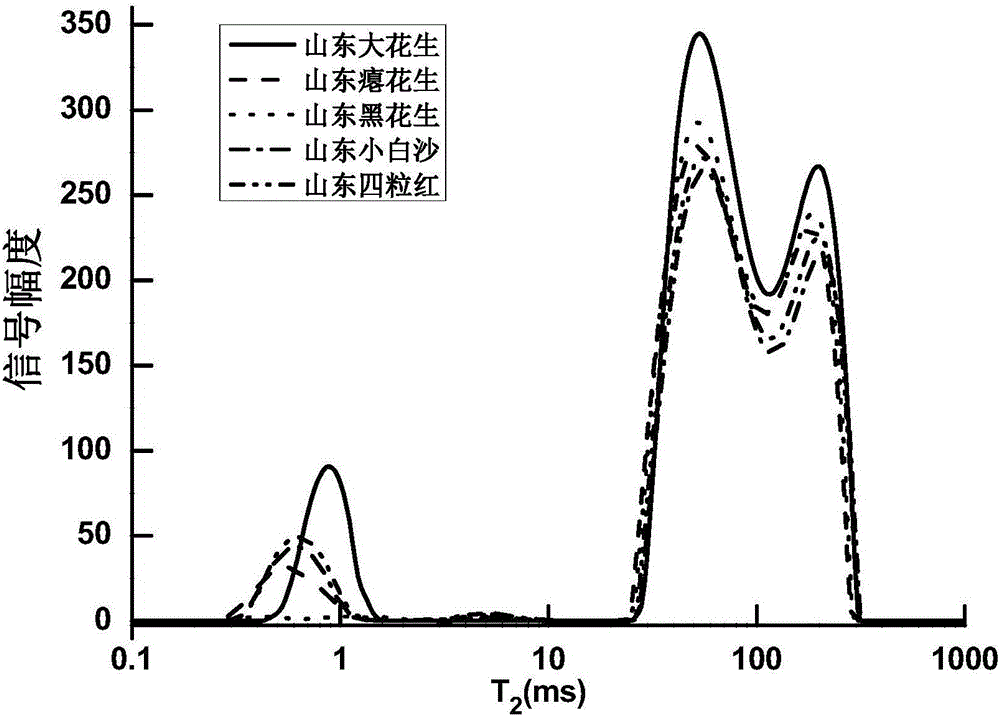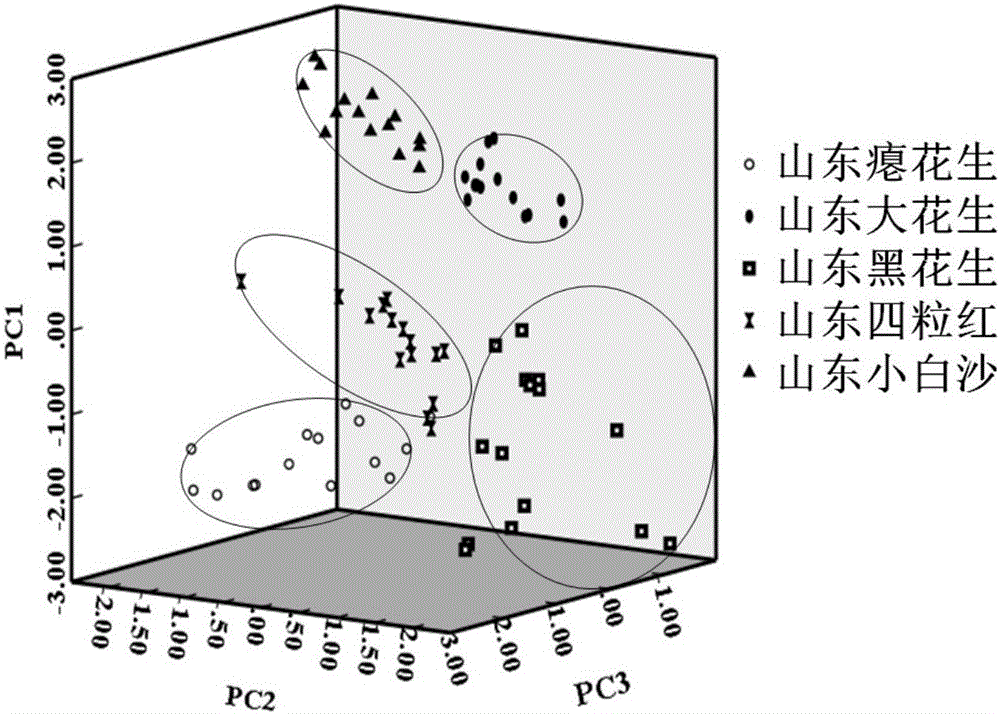Peanut variety nondestructive testing method based on nuclear magnetic resonance technology
A kind of nuclear magnetic resonance and non-destructive testing technology, applied in the direction of using nuclear magnetic resonance for analysis, etc., can solve the problems of inability to quickly detect peanuts, time-consuming and laborious, and achieve the effects of fast detection speed, improved detection efficiency, and low analysis cost.
- Summary
- Abstract
- Description
- Claims
- Application Information
AI Technical Summary
Problems solved by technology
Method used
Image
Examples
Embodiment 1
[0033] Example 1: Identification of different varieties of peanuts from the same place of origin using nuclear magnetic resonance methods
[0034] Step 1: Take five different varieties of Shandong Linyi peanut samples harvested that year, Shandong Linyi Black Peanut (Shandong Black Peanut), Shandong Linyi Shrimp Peanut (Shandong Shrimp Peanut), Shandong Linyi Four Red Peanut (Shandong Four Red Peanut) ), Shandong Linyi Xiaobaisha Peanut (Shandong Xiaobaisha), Shandong Linyi Big Peanut (Shandong Big Peanut) as standard products, each 500g.
[0035] The peanuts selected in this example conform to the normal distribution law of the peanut population. Shandong black peanuts are black; Shandong four grains of red are bright red and shiny; Shandong shriveled peanuts are light red, and Shandong big peanuts are lighter than shriveled peanuts, and the grains are large and plump; Shandong Xiaobaisha is a slightly powdery white, such as figure 1 As shown, in order to facilitate the expe...
Embodiment 2
[0043] Example 2: NMR method is used to distinguish Jilin Baisha four red peanuts and Shandong Linyi four red peanuts
[0044] In this embodiment, Jilin Baisha four-grain red peanuts and Shandong Linyi four-grain red peanuts are selected as detection objects. Both kinds of four-grain red peanuts are bright red and shiny, and Jilin four-grain red peanuts are darker than those in Shandong, such as figure 1 shown.
PUM
 Login to View More
Login to View More Abstract
Description
Claims
Application Information
 Login to View More
Login to View More - R&D
- Intellectual Property
- Life Sciences
- Materials
- Tech Scout
- Unparalleled Data Quality
- Higher Quality Content
- 60% Fewer Hallucinations
Browse by: Latest US Patents, China's latest patents, Technical Efficacy Thesaurus, Application Domain, Technology Topic, Popular Technical Reports.
© 2025 PatSnap. All rights reserved.Legal|Privacy policy|Modern Slavery Act Transparency Statement|Sitemap|About US| Contact US: help@patsnap.com



